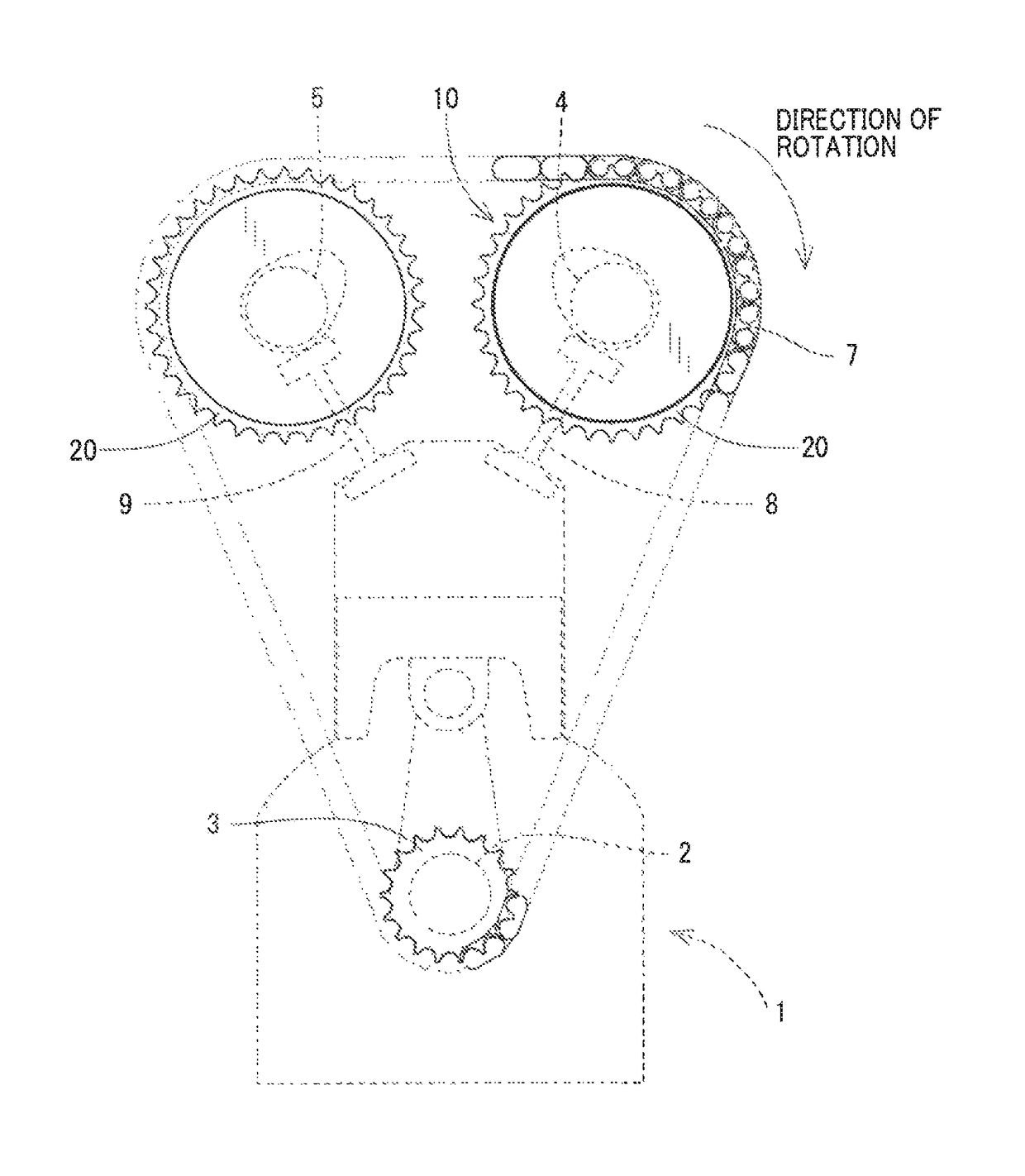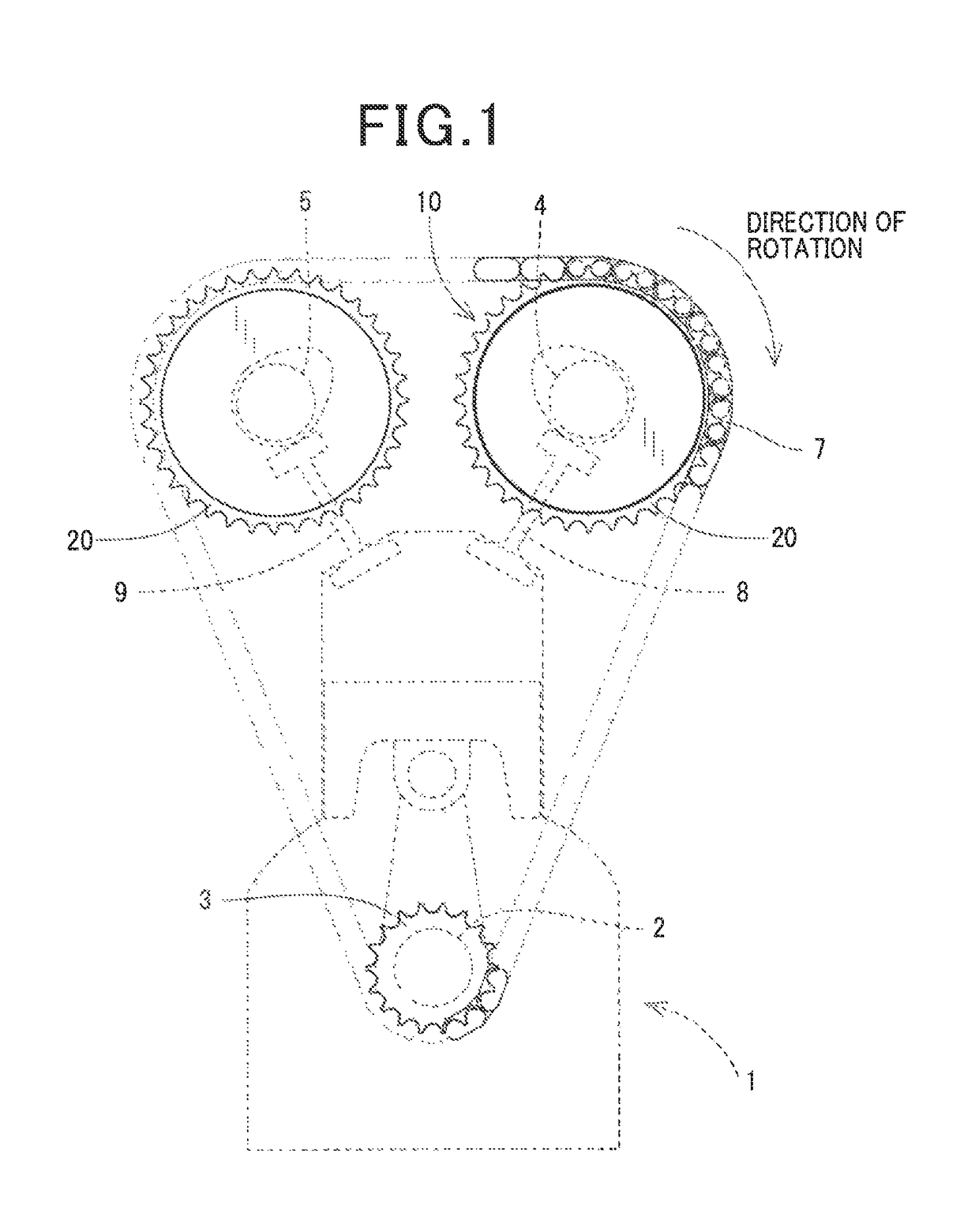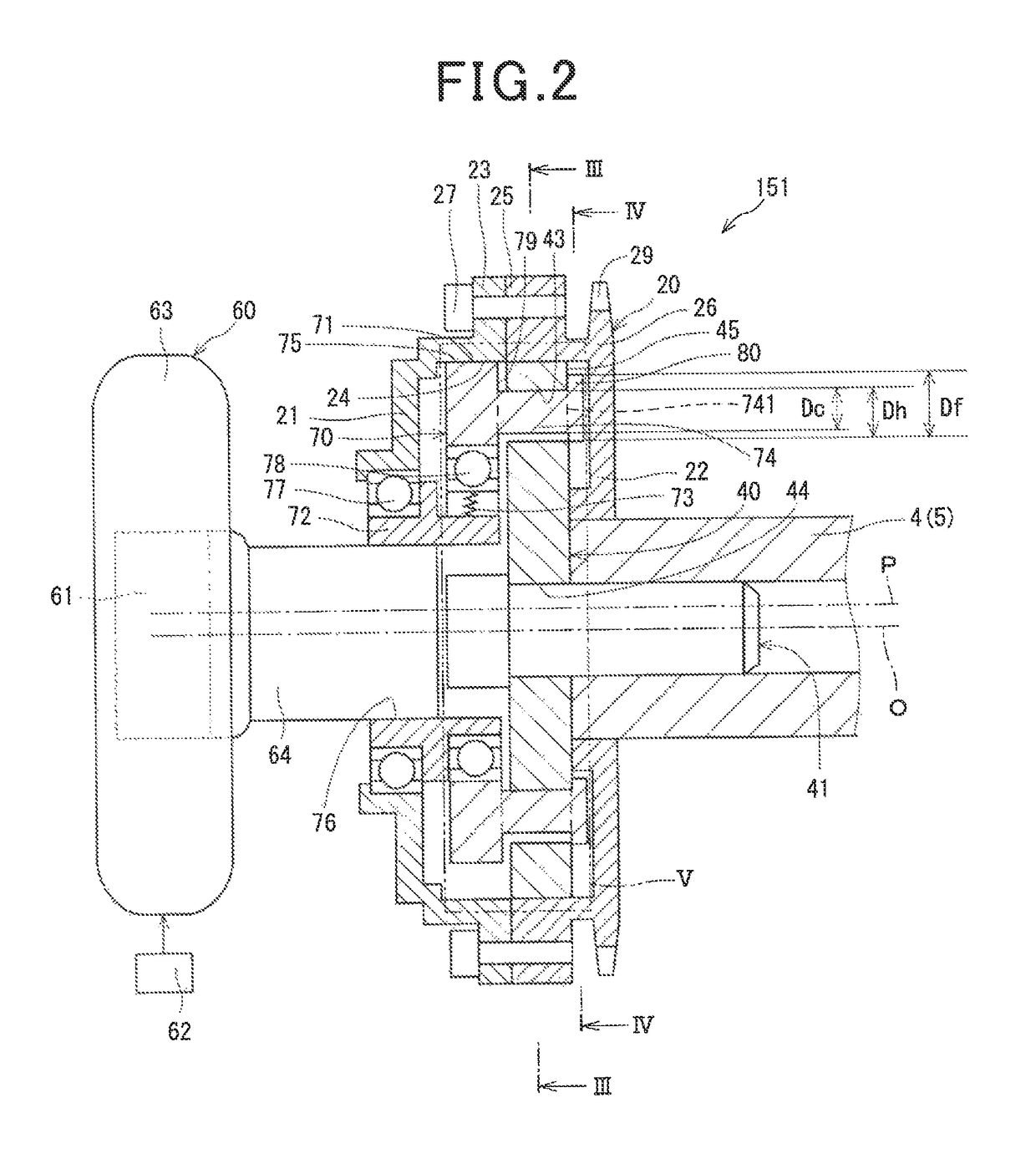Eccentric speed variator
a technology of eccentric speed and variator, applied in the direction of toothed gearings, control devices, gearings, etc., can solve the problems of increasing production costs, increasing length or number of parts, increasing etc., to reduce local mechanical friction, reduce the risk of mechanical vibration or noise, and eliminate the effect of eccentric speed variator siz
- Summary
- Abstract
- Description
- Claims
- Application Information
AI Technical Summary
Benefits of technology
Problems solved by technology
Method used
Image
Examples
first embodiment
[0065]Each of the cycloidal speed reducer 151 is, as illustrated in FIG. 2, equipped with the first rotor 20, the second rotor 40, the control unit 60, and the third rotor 70.
[0066]The first rotor 20 is of a box shape including the bottomed cylindrical gear member 21 and the bottomed cylindrical sprocket 22 which are arranged coaxially with each other. The first rotor 20 has an inner chamber formed therein and is rotatable.
[0067]The first rotor 20 is mounted coaxially with the camshaft 4 or camshaft 5.
[0068]The gear member 21 is equipped with the protrusion 23 and the first internal gear 24.
[0069]The protrusion 23 is formed on the gear member 21 and extends outwardly from an outer periphery of the gear member 21 in a radial direction of the gear member 21.
[0070]The first internal gear 24 is formed on the inner peripheral wall of the gear member 21. The first internal gear 24 has teeth whose tops face the radial center of the gear member 21. The first internal gear 24, as referred to...
second embodiment
[0108]FIG. 6 illustrates the cycloidal speed reducer 152 according to the second embodiment which has the intermediate member 82 disposed between the second rotor 40 and the flanges 84. The intermediate member 82 is of a plate shape. Other arrangements are identical with those in the first embodiment.
[0109]Specifically, the intermediate member 82 is, as illustrated in FIG. 7, made of an annular disc and has formed therein eight through-holes 83 which are aligned or coincide with the holes 43 and through which the cylindrical pins 74 pass. The through-holes 83 are identical in configuration with the cylindrical pins 74. The term “identical with” or “equal to” means within usual tolerances and errors. FIG. 7 illustrates the intermediate member 82 using dots in order to facilitate visual perception thereof.
[0110]Referring back to FIG. 6, when the flange end surface 81 contacts the intermediate member 82, the flanges 84 work in the same way as in the first embodiment. The use of the int...
third embodiment
[0111]FIGS. 8 and 9 illustrate the cycloidal speed reducer 153 according to the third embodiment which is different in configuration of the cylindrical pins 174 from the first embodiment. Other arrangements are identical, and explanation thereof in detail will be omitted here.
[0112]Specifically, the cycloidal speed reducer 153 is, as illustrated in FIGS. 8 and 9, equipped with the cylindrical pins 174 each of which has the middle portion 742 constricted in the form of a waist. In this embodiment, the diameter of the middle portion 742 is defined as Dm, the diameter of the end 741 of each of the cylindrical pins 174 is defined as De, and the end 743 of each of the cylindrical pins 174 leading to the third rotor end surface 79 is defined as Dn.
[0113]Each of the cylindrical pins 174 is shaped to have the diameters De and Dn equal to each other (De=Dn). Each of the cylindrical pins 174 is also shaped to have the diameter Dm which is smaller than the diameters De and Dn (Dm742 serves to ...
PUM
 Login to View More
Login to View More Abstract
Description
Claims
Application Information
 Login to View More
Login to View More - R&D
- Intellectual Property
- Life Sciences
- Materials
- Tech Scout
- Unparalleled Data Quality
- Higher Quality Content
- 60% Fewer Hallucinations
Browse by: Latest US Patents, China's latest patents, Technical Efficacy Thesaurus, Application Domain, Technology Topic, Popular Technical Reports.
© 2025 PatSnap. All rights reserved.Legal|Privacy policy|Modern Slavery Act Transparency Statement|Sitemap|About US| Contact US: help@patsnap.com



